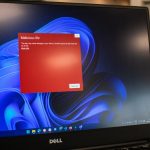As remote work becomes increasingly common, businesses face a growing challenge: how to enable remote access without exposing their data and systems to unnecessary risks. With employees logging in from home, coffee shops, or across the globe, ensuring secure access to sensitive systems has never been more critical. Fortunately, there are many strategies that organizations can implement to balance flexibility with robust cybersecurity.
1. Implement Robust Authentication Protocols
One of the most effective ways to protect remote access points is by requiring multi-factor authentication (MFA). MFA adds an extra layer of protection beyond just usernames and passwords. It typically requires something the user knows (a password), something they have (a smartphone app or token), and something they are (biometric verification, like a fingerprint). This significantly reduces the chance of unauthorized access, even if credentials are compromised.
2. Use Secure Remote Access Solutions
Instead of relying on public cloud services that might not be designed with enterprise security in mind, businesses should choose purpose-built secure remote access solutions. These include:
- Virtual Private Networks (VPNs) that encrypt data between the user’s device and the company network
- Zero Trust Network Access (ZTNA) which verifies every user’s identity and context before granting access
- Remote Desktop Gateways that allow secure use of internal systems from a distance
[ai-img]vpn security, remote work, cloud access[/ai-img]
3. Enforce Strong Access Controls
A key principle in cybersecurity is least privilege — users should only have access to the data and systems they need. By segmenting networks and limiting user access based on roles, businesses reduce the potential damage in the event of a breach. Regularly auditing access rights and removing permissions that are no longer needed is also vital.
4. Educate Employees Continuously
Even with the best technology solutions in place, human error remains the leading cause of security breaches. Ongoing security awareness training should cover topics like:
- Recognizing phishing attempts
- Safe handling of company data on personal or public devices
- Best practices for password management and social engineering skepticism
Gamification, simulations, and micro-learning modules can make this training more engaging and effective.
5. Monitor and Log Remote Access Activity
Constant vigilance is key. All remote access should be logged and monitored in real-time for suspicious behavior. Anomalies like odd login times, unusual access patterns, or attempts to access restricted areas can help identify potential breaches early. Implementing a SIEM (Security Information and Event Management) system can help automate and centralize this monitoring.
[ai-img]cybersecurity monitoring, network logs, threat detection[/ai-img]
6. Maintain Consistent Patch Management
Unpatched systems and applications can be a goldmine for attackers. Businesses must ensure all devices that connect remotely — including employee-owned laptops and smartphones — are updated regularly. Mobile Device Management (MDM) and endpoint detection and response (EDR) tools can enforce patching and provide visibility into device health.
7. Establish Remote Work Policies and Procedures
Every organization should have a documented remote access and remote work policy. This should outline:
- Acceptable use guidelines
- Authorized devices and software
- Data handling procedures
- Incident response steps in case something goes wrong
Employees should acknowledge and understand these policies as part of their onboarding and regularly thereafter.
8. Backup and Recovery Planning
Even with all safeguards in place, breaches and data loss can happen. That’s why backup and disaster recovery strategies are so important. Regular, encrypted backups stored offsite or in the cloud can help businesses recover without paying a ransom or suffering prolonged downtime.
Conclusion
Remote access comes with a fair share of risks, but with the right strategies, businesses can enjoy the benefits of flexibility without sacrificing security. From multilayered authentication to employee education and robust monitoring, there are many proactive measures that organizations can take. With cyber threats continuing to evolve, a dynamic and comprehensive approach to remote access security isn’t just a best practice — it’s a necessity in the modern business environment.








